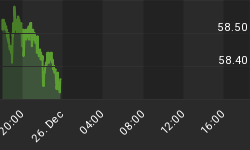Much has been written lately about the beginnings of a recovery in the real estate market. Just last week housing bugs (investment "bugs" are not exclusive to those who only love gold) were cheering the latest data point which they claimed as evidence the market is making a comeback.
The Pending home sales index rose 6.3%, to 87.7 from 82.5 in November. That figure was also 2.1% higher than that of December 2007 when it registered 85.9. Helping to drive the increase in pending home sales are three major factors: lower home prices, lower new home construction rates and lower mortgage rates.
However, although those three factors have improved greatly since the bubble burst in 2006, they still do not signal an end to falling prices.
At the height of the bubble, the median home price-to-income ratio reached about 5:1. It has since retreated to 3.6:1, which is still above the historic level of 3.2:1 but promising nonetheless.
According to the distinguished Vince Farrell of Soleil Securities, the spread between thirty-year fixed rate mortgages and the 10-year Treasury note is about 235 basis points. The historic spread is about 170 bps and the high water mark spread was well above 500 bps. Although rates are falling, (much like home prices) they are still above historic norms. But, nevertheless, they're still headed in the right direction... another point for housing bulls.
New home construction rates are now running at 550,000 units annually, down 15.5% in January from its November reading and down 45% from its year-ago period. The peak of new home construction rates reached over 2mm units annually in August of 2005, a number I repeatedly said had to come down. While we'd reach a housing bottom if homebuilders weren't building any new homes at all, this decreased rate represents another real estate positive.
So with all this good news out there, why am I still projecting a continuation of falling home prices? Inventories, especially the key reading of vacant homes for sale. The reason the number of vacant homes for sale is more salient than those that are occupied is that a home sitting vacant is much more likely to stay on the market until it is sold, regardless of price (as opposed to occupied homes, with owners who might simply pull the listing if they don't like the price). Because the owners of so many unoccupied homes are banks, they are especially motivated to hit the bid on a property.
Data released this month show there are currently a record 19 million U.S. homes that are sitting vacant. Of those empty homes, 2.23 million units are on the market -- another record. The share of empty homes for sale rose to 2.9% in the fourth quarter of 2008, the most since data recording began in 1956. And according to FDIC data, U.S. banks owned $11.5 billion worth of homes -- a figure which stood at just $5.4 billion a year ago!
Additionally, at the end of 2008 the supply of new homes hit an all time high of 12.9 months. Thus, despite all the "good news" on the home front, the supply of both new and vacant homes for sale remain at all-time highs.
Now, some good news was registered in existing homes, as the supply dropped to 9.3 months, down from 11.2 in November of 2008. Still, even this number represents about twice the amount needed to bring about price stability.
The reason there is an intractable level of homes for sale clearly stems from the faltering economy, which is causing massive layoffs and skyrocketing unemployment. The rate is currently 7.6%, a 17-year high. This compels homeowners (many of whom owe more on their home than it is worth) to walk away from their properties. After all, how much motivation do home owners need to abort if they are already upside down on the home and now find themselves without a job?
Home prices and mortgages rates may have to fall well below historical levels in order to clear away the massive buildup in inventories, and it's a condition which may need to exist for a protracted period of time before home price stability can occur.
Until home prices stabilize there can be no stemming the decline of bank assets. Until bank assets stop falling, there can be no real healing in the stock market or the economy.
Today we got the latest round of bailout babble from the Treasury Department. In this newest bank bailout plan, there is supposed to be yet another attempt at stemming the rise in foreclosures with a $50 billion forbearance package. In their continued effort to abrogate the market, however, government stubbornly chooses to ignore the obvious: what took years to build into a bubble will take years to reconcile.
Healing takes time, but that is not part of our new administration's plan to fix the real estate market. Instead, like his predecessor George W. Bush, the Obama team feels it is better to artificially prop up home prices at an unsustainable level rather than have them retreat to a price that can be supported by the free market. But then again, isn't this just more evidence that the idea of free market capitalism is being trampled -- by both parties.
Be sure to listen in on my Mid-Week Reality Check.















